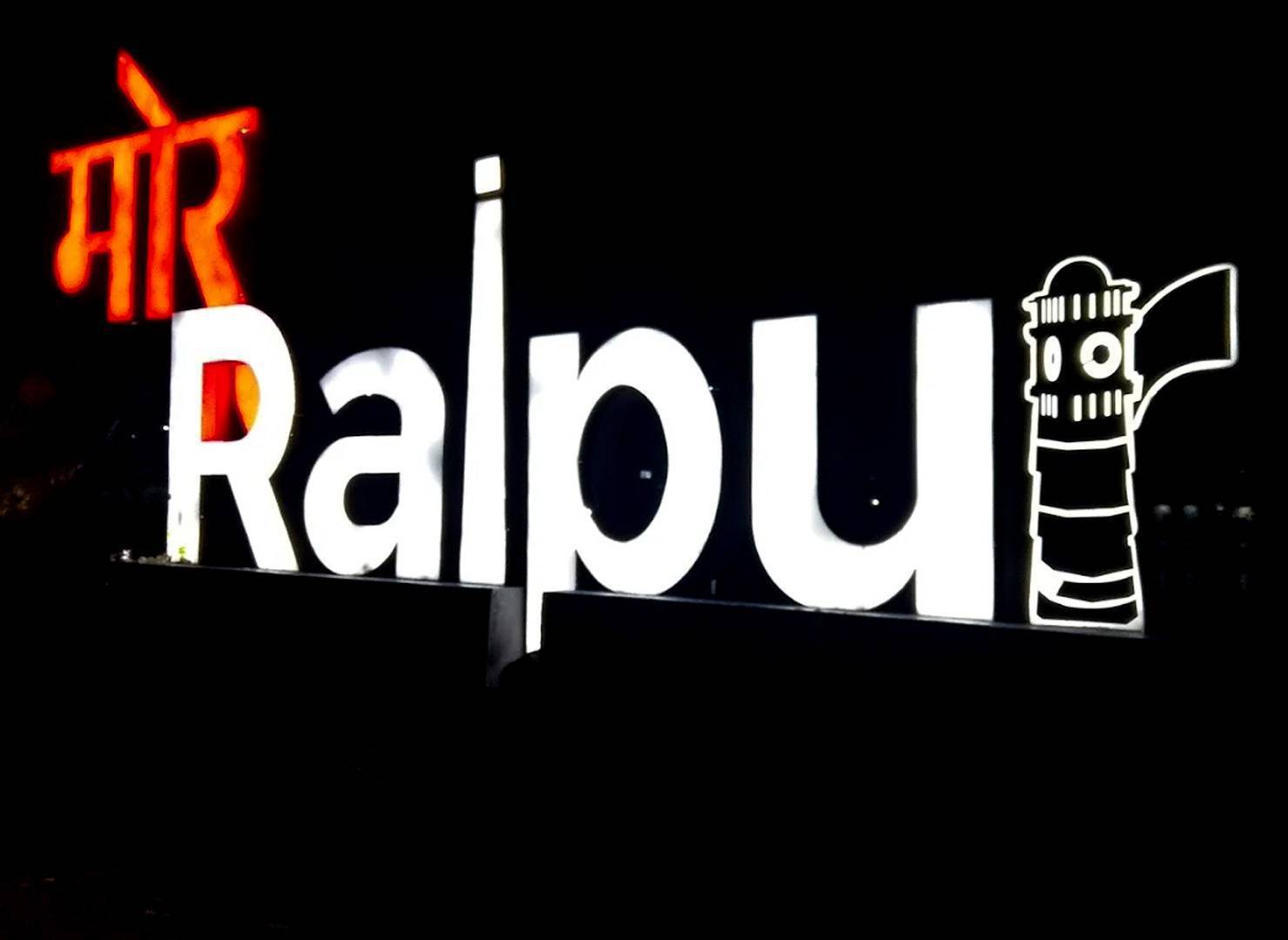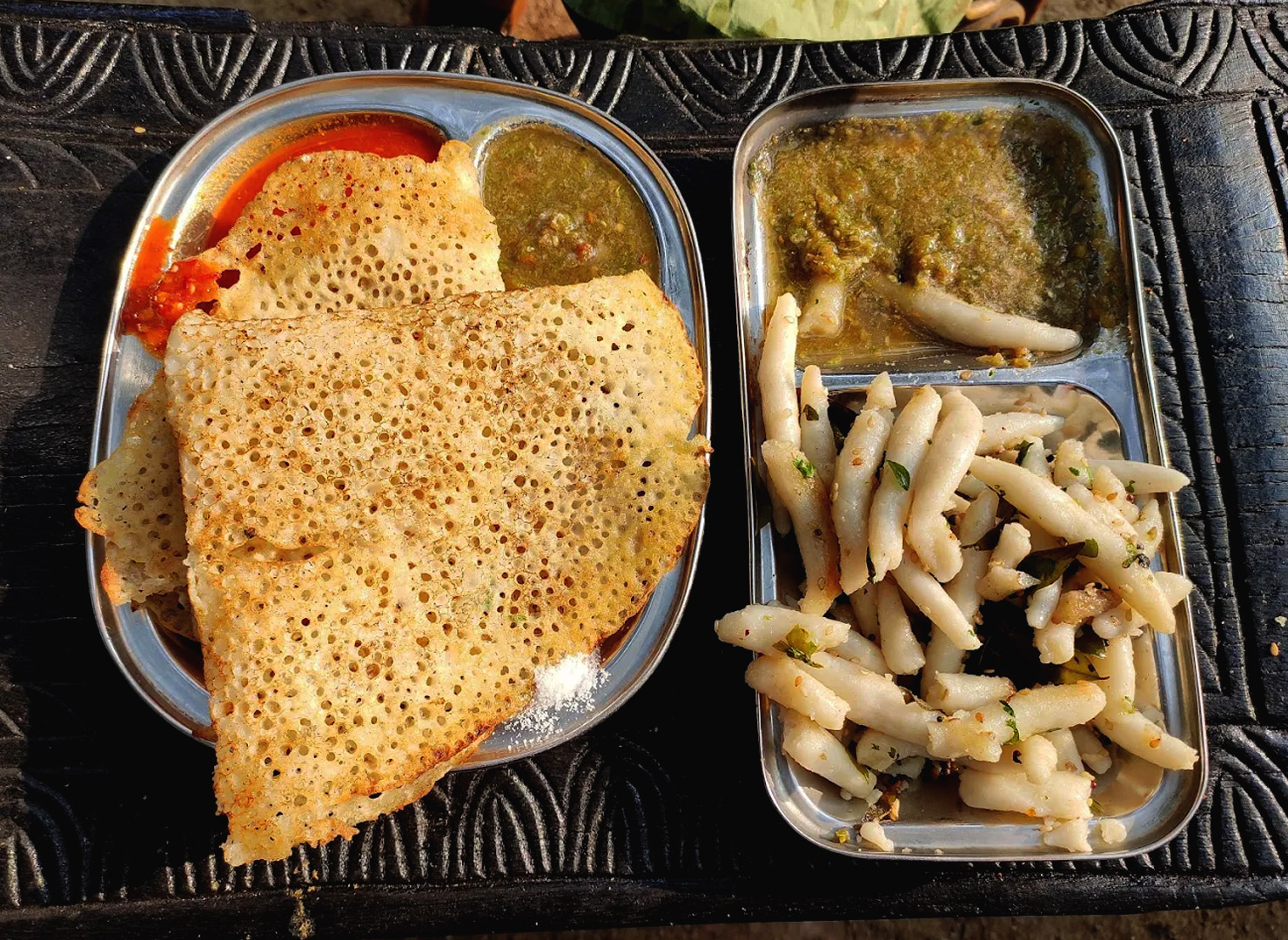Explore the Taste of Raipur: A Food Lover's Guide
Raipur is a great place to visit if you enjoy food that is honest, hearty, and full of regional flavor. Raipur, the capital of Chhattisgarh, is a tasty crossroads where traditional Chhattisgarhi dishes--built around rice, lentils, forest products, and leafy vegetables--meets a vibrant street-food culture and a modern café culture.
This guide decodes the flavours and textures of Raipur. It explains how the dishes taste, how they are made, where you can eat in the city (with the neighborhoods and landmarks), as well as how to enjoy the city's sweets, snacks and everyday meals.
Why Raipur’s food tastes the way it does
The pantry (aka "rice bowl logic")
Chhattisgarh, India's rice bowl, is a popular name. Rice, rice flour and leftover rice are used to make popular staples such as chila, which is a crepe made with rice and urad, fara/muthia, which is a steamed rice dumpling tempered with spices, angakar, or thick, grilled rice, and chousela, a deep-fried rice puri. Curd, gram-flour, and leafy greens like lal bhaji and chechbhaji add earthy mineral notes to the plates of local restaurants and at home.
Influence of forest and farms
The region also uses seasonal vegetables and forest products. Aamat is often described as "the sambar from Chhattisgarh". It's a spicy soup that includes ginger, cumin and coriander.
Food lovers in Raipur:
- Comfort with a clean grainy taste (griddled or steamed rice).
- Fermented notes: (curd-based curries such as dubki Kadhi, naturally soured batters)
- Chutneys are bright and colorful. Green coriander-mint chutney, tomato-chili chutney, and tangy, tamarind flavored chupaney.
- Spices that are balanced: curry leaves, curry seeds, mustard seeds and garlic provide a boost, but the heat is not overwhelming.
Taste the best of Chhattisgarhi cuisine
Here are Raipur’s most iconic plates - how they taste, where they come from, and what to pair with them.
1) Chila
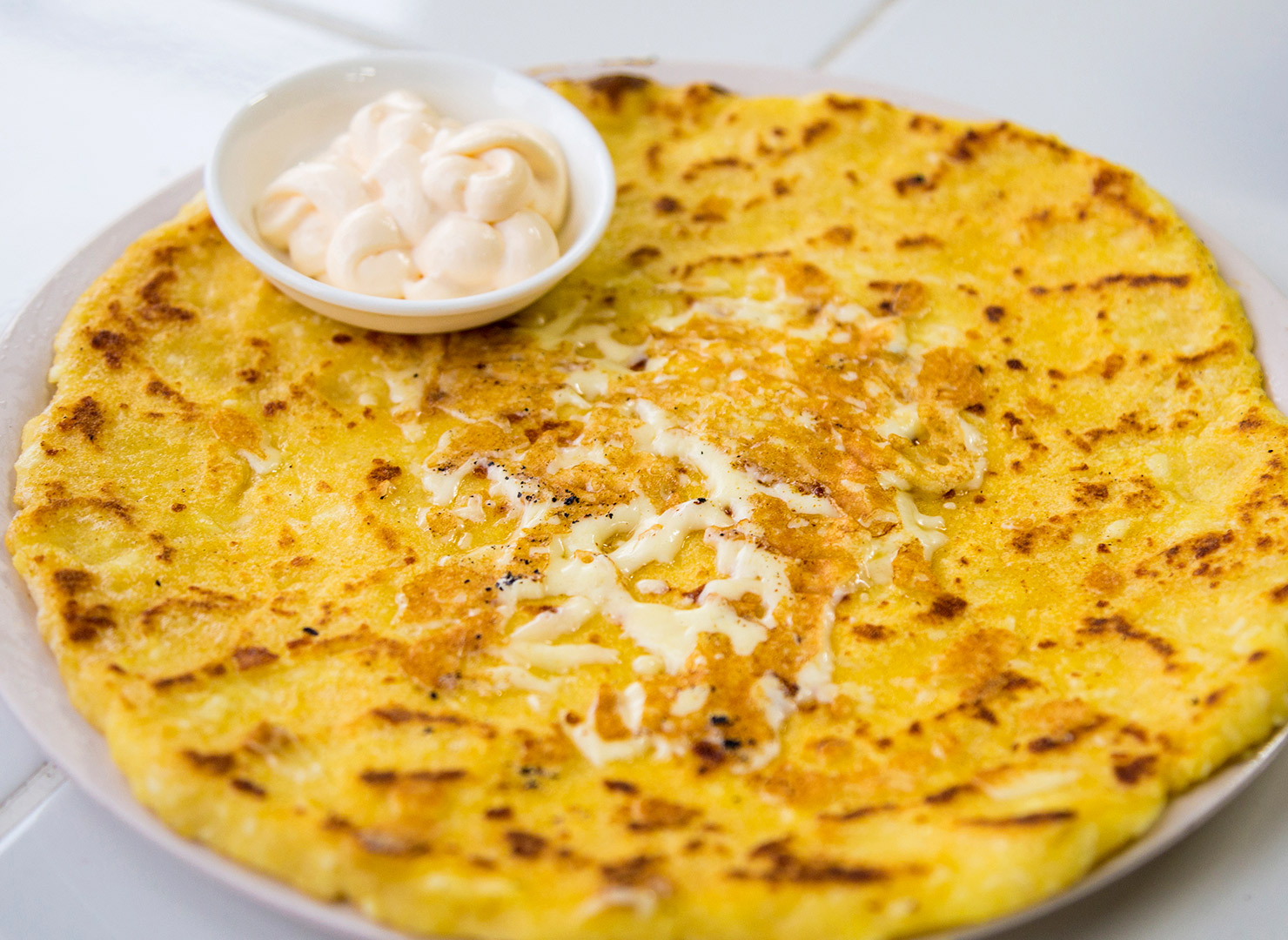
What it is: Crepes made from a batter consisting of rice and black gram (urad dal).
Taste & Texture: Crispy at the edges and soft on the inside if it is naturally fermented. Savory, with a grainy aroma.
Ingredients: Rice, urad daal, salt and optional green chilies/coriander. Oil or ghee to cook on a griddle.
Locals eat this: As a snack or breakfast, with tomato or green chutney.
2) Fara / Muthia
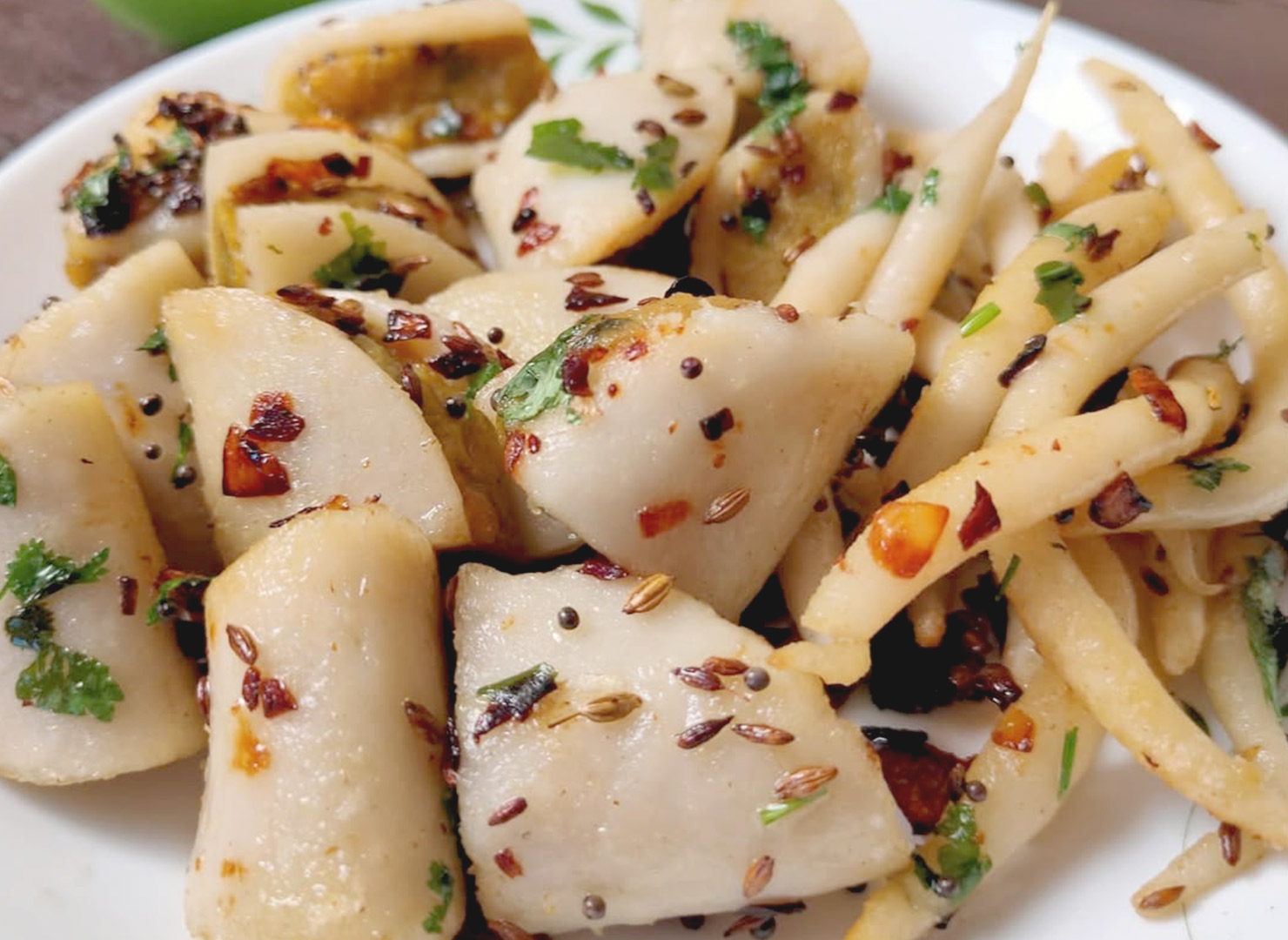
What it is: Steamed dumplings or cylinders made from leftover rice or rice flour, which are sliced and tempered.
Taste & Texture: Comforting and soft to the mouth; the tempering has a hint of chili, curry leaf, and nutty mustard.
Ingredients: rice or rice flour; salt; mustard seeds, cumin leaves, turmeric, and sometimes tomato.
It goes well with curd, coriander relish, or spiced tomato relish.
3) Angakar Roti
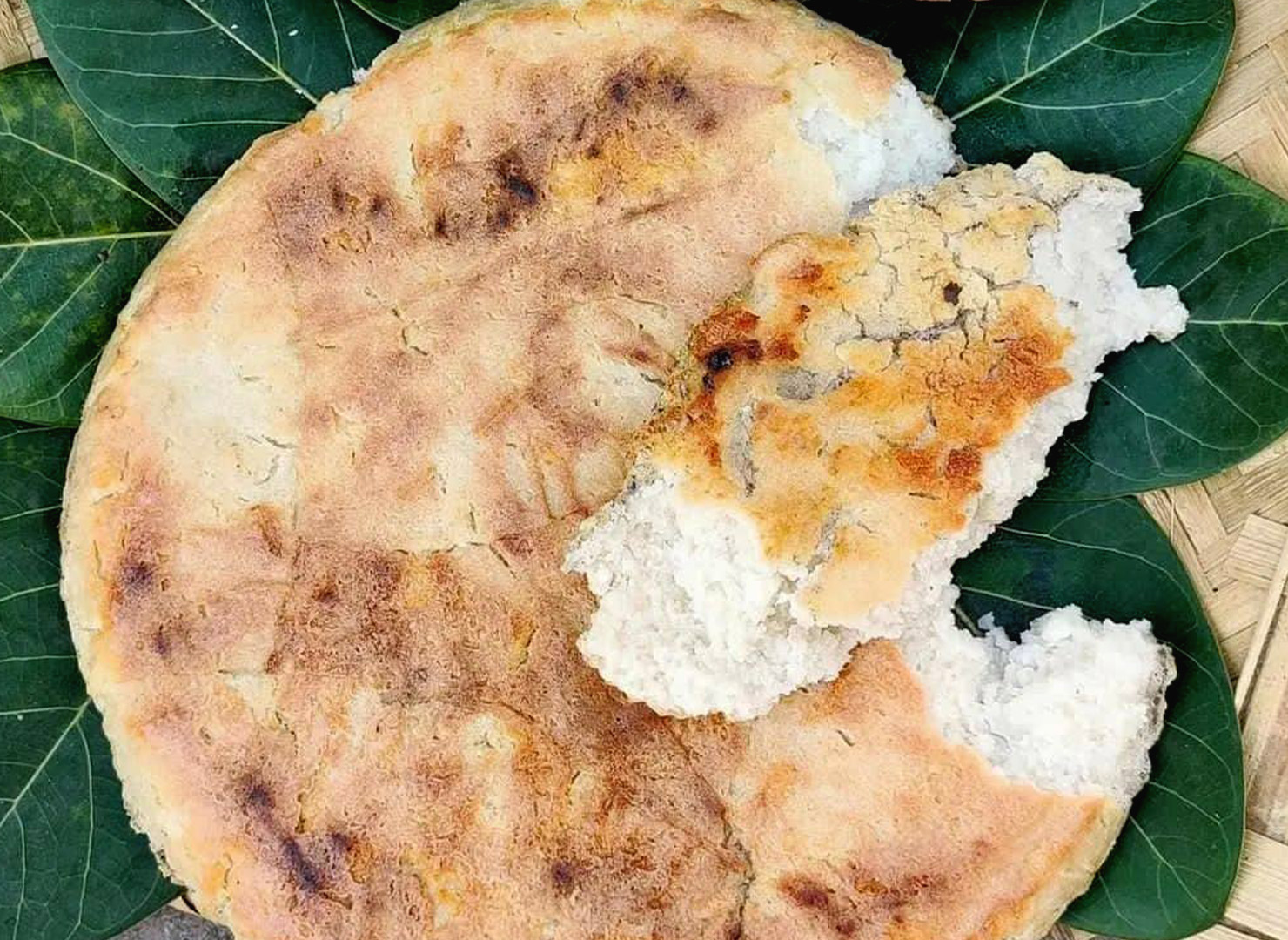
What it is: It's a thick rice roti that has been patted out by hand, then roasted on a tawa (griddle).
Taste & texture: Rustic and slightly smoky; soft with light charring. Ghee happily eats it up.
Ingredients: Rice flour (water, salt), ghee, and salt.
Pairing: Dals, dry sabzis, or tangy, sour chutneys.
4) Chousela Roti
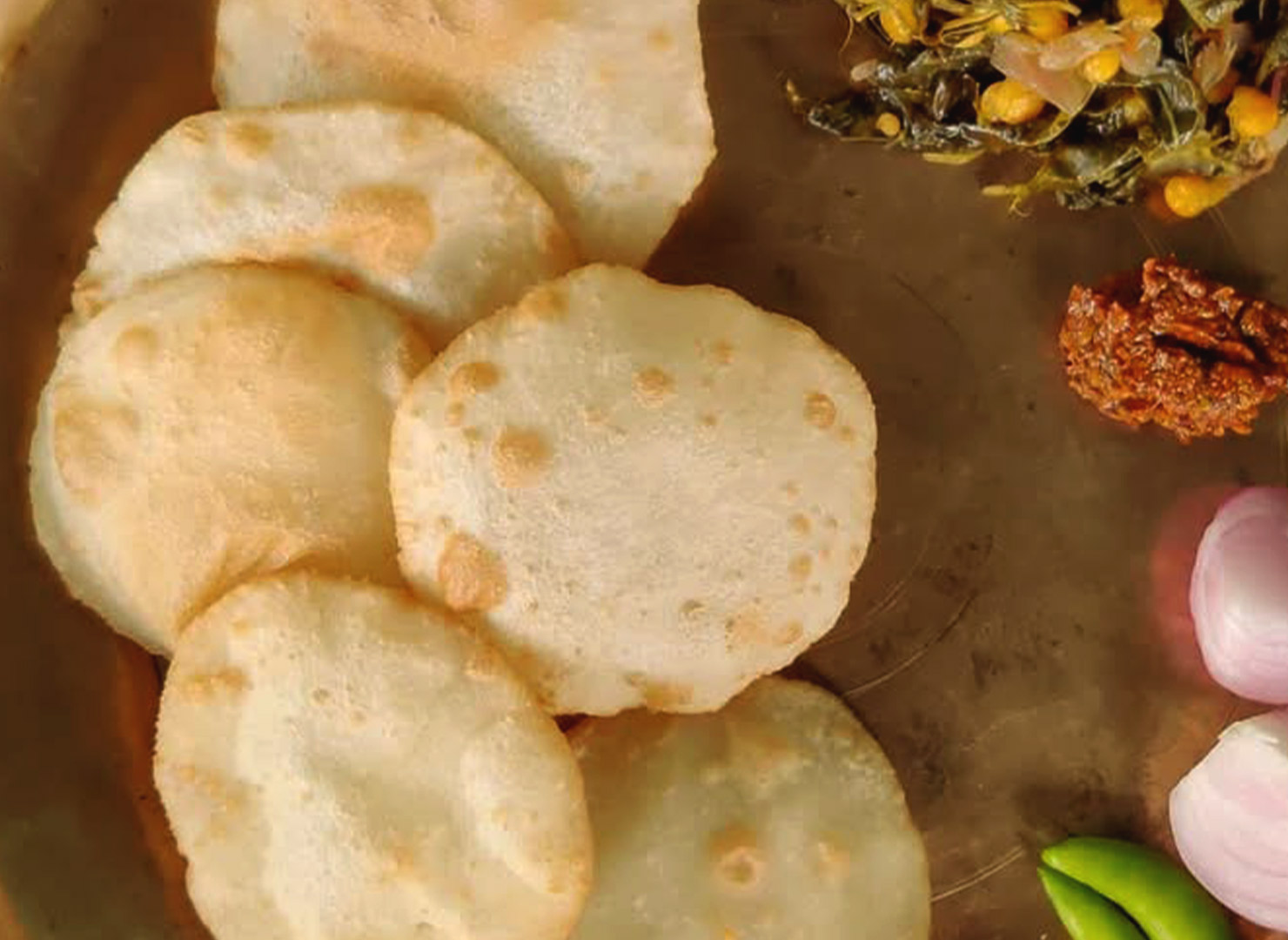
What is it: Deep-fried puris of rice that puff up beautifully.
Taste & Texture: Crispy outside with a softly layered interior; rice flavour is mildly sweet and savory.
Ingredients: rice flour dough, oil for frying.
Pairing: Sweet-tangy chutneys or spicy mutton/veg sauces, available at Gad Kalewa's traditional food counter.
5) Dubki Kadhi
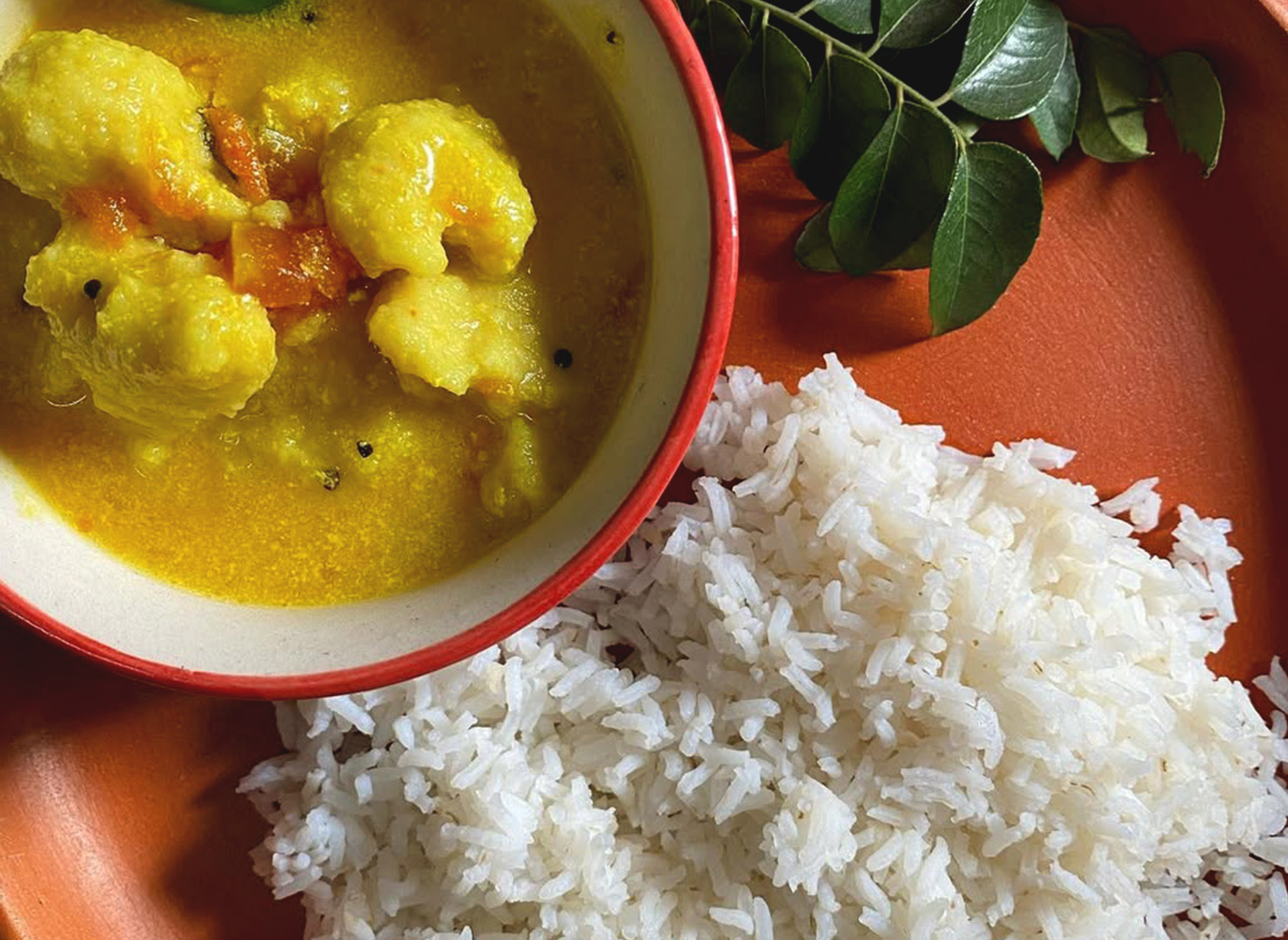
What it is: Kadhi based on curd with gram flour dumplings "diving", (dubki), in a tangy, yogurt-based gravy.
Taste & Texture: Creamy, tart with soft pakoras. Turmeric warmth and asafoetida scent.
Ingredients: curd, spices, besan, and pakoras.
Pairing: Steamed rice, angakar, or phulka.
6) Aamat
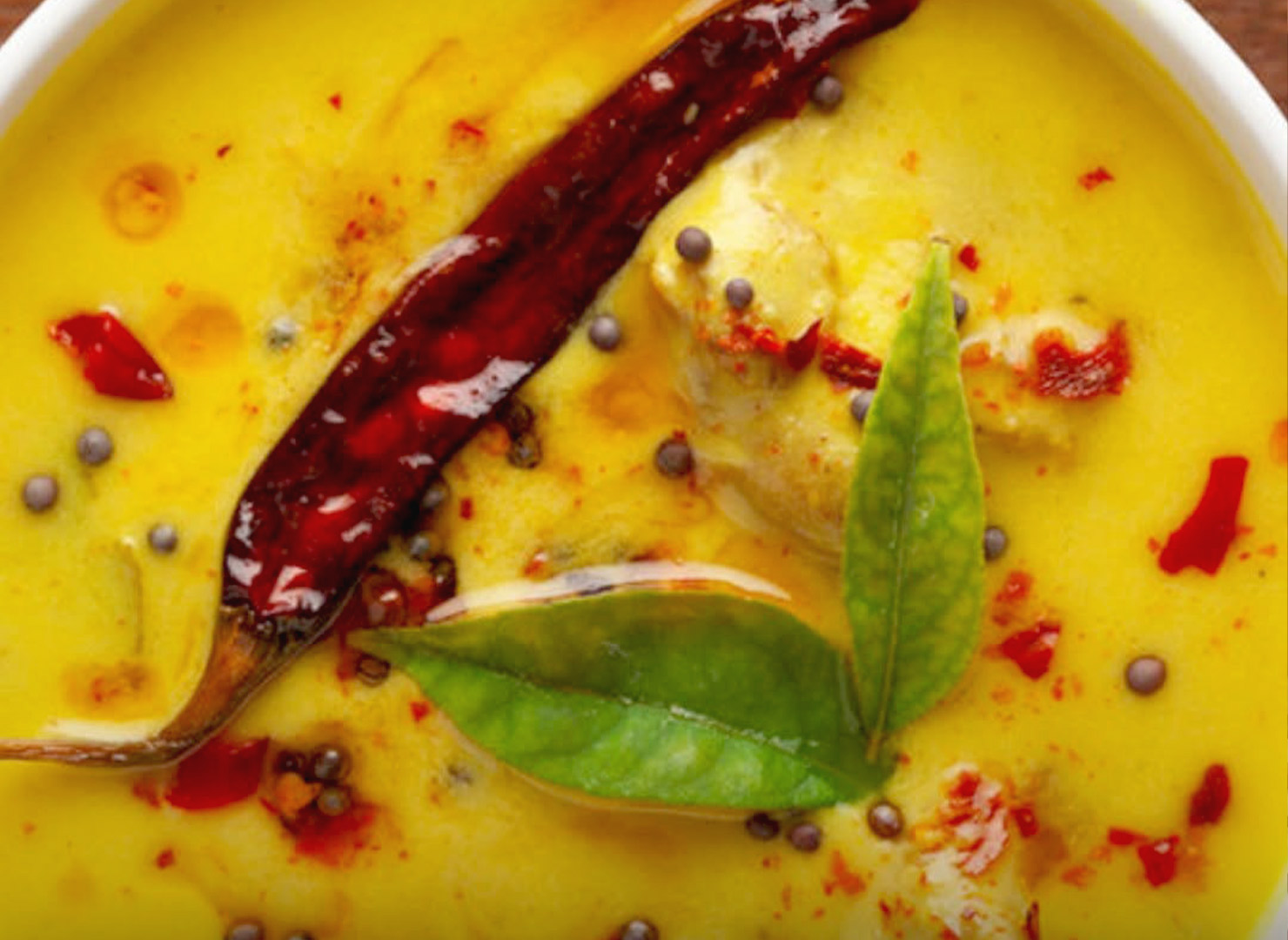
What it is: A spicy-sour soup made with bamboo shoots and vegetables that's loved by tribal communities.
Taste & Texture: Tangy and aromatic with a peppery bite.
Main ingredients: Mixed vegetables, bamboo shoots, ginger, cumin, coriander, garlic, asafoetida.
Pairing: Simple rotis or steamed rice.
7) Bore Baasi
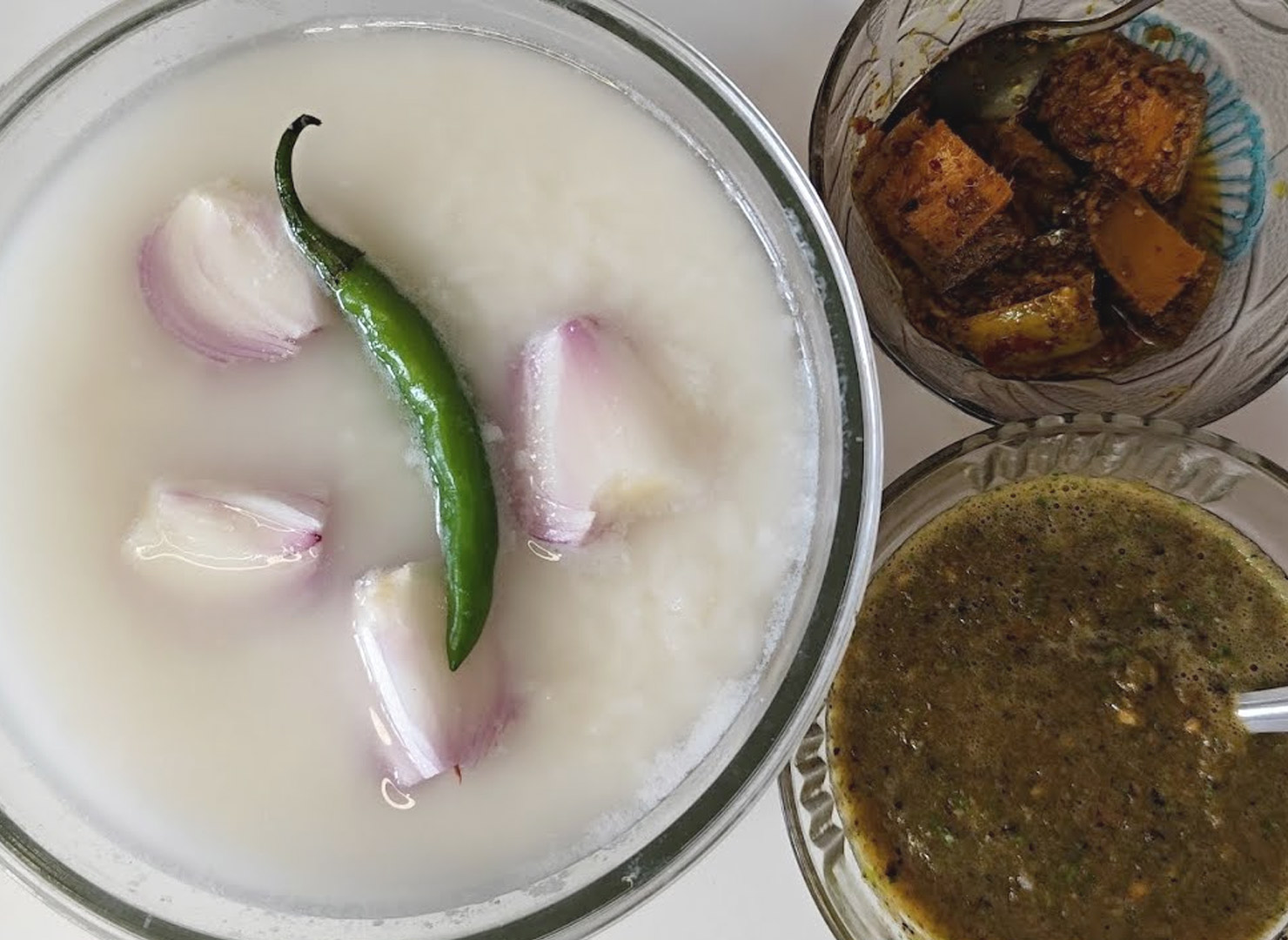
What it is: Cooked rice soaked in water/buttermilk/curd and eaten chilled.
Taste & Texture: Lightly tangy and cooling in the summer.
Ingredients: leftover rice, water, buttermilk/curd, raw onion and pickles on the side.
8) Bhajia & Bafauri
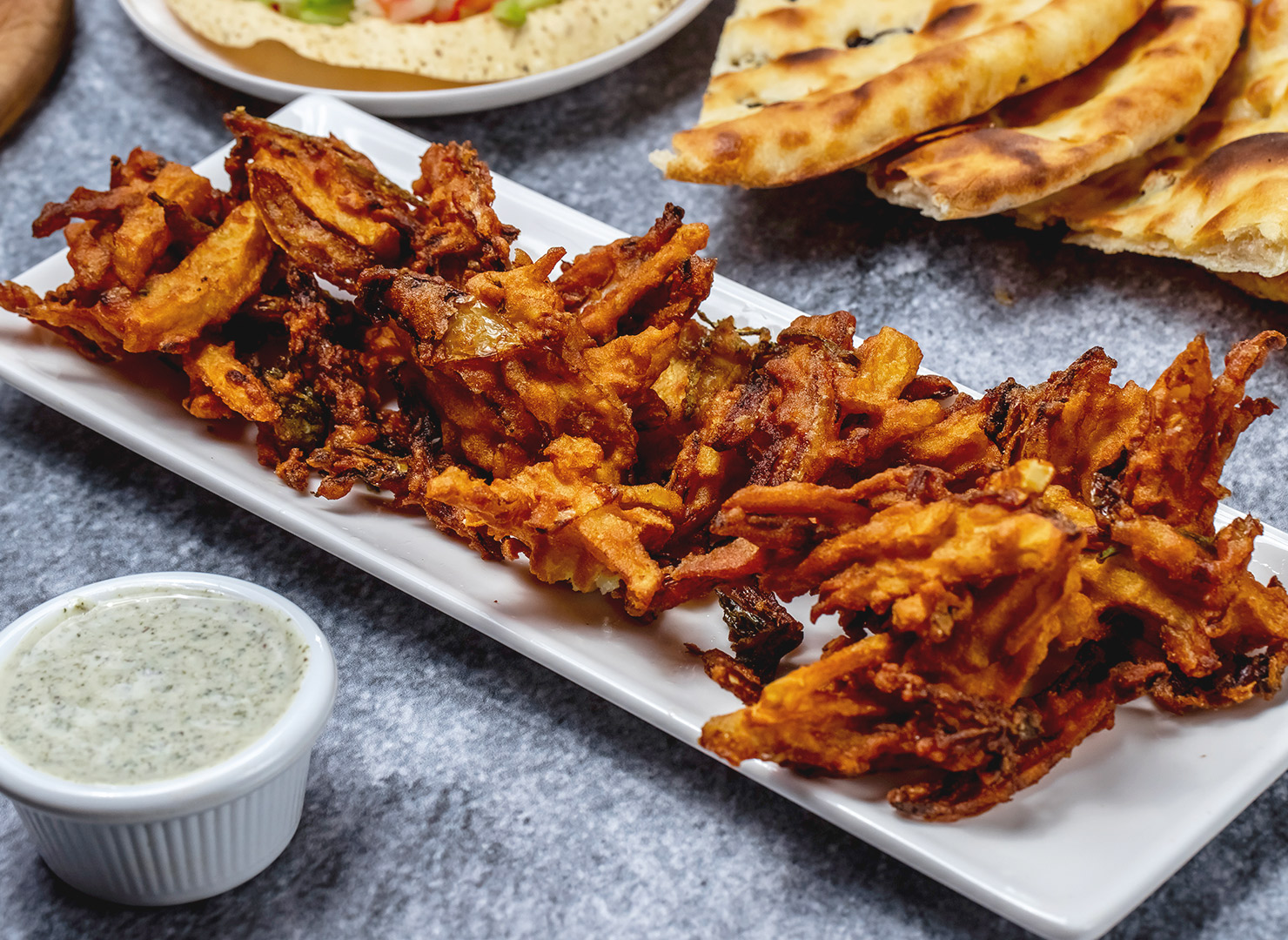
What are they?
Bhajia (fritters): A delicious dish to make on a rainy day.
Bafauri is a steamed lentil snack, usually made with chana dal. It's lightly spiced.
Taste and texture: Bhajia is crisp and rich; Bafauri is light, earthy, and high in protein.
Sweets & Festive Bite
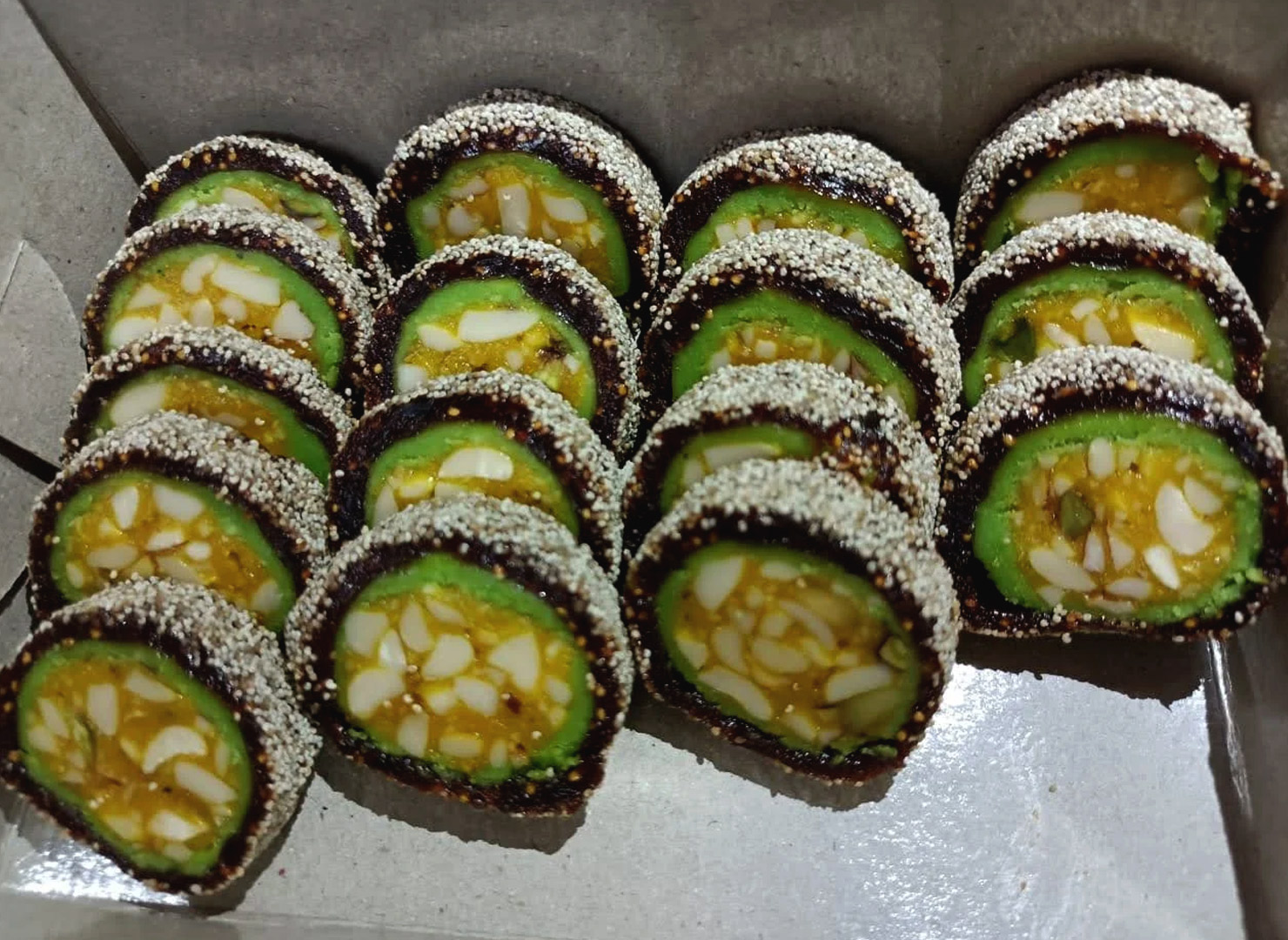
Watch out for gulgula, a jaggery-fritter sweet. Also look for petha, a soft translucent sweet. Sweets are dominated by jaggery, syrupy delights and rice flour.
The Street-Food map: neighbourhoods, hubs and what to eat
Raipur street food ranges from a classic central-Indian morning meal to an evening snack by the lake. This makes it easy to snack.
-
Telibandha ("Marine Drive") & Swami Vivekananda Sarovar (Telibandha Lake)
Why go? A popular promenade that includes a vibrant food zone.
What to try: Gupchup, egg rolls, Momos, Chinese Indian snacks, and Chaat in the evenings -- perfect for a stroll + bite plan.
-
Sadar Bazar & Around Gol Bazar
Why go? Classic market atmosphere with long-running snack stands.
Try: Locals recommend dahi-vada and dahi-kachori stands; nearby lanes serve samosas, kachori and jalebi as well as seasonal fruit shakes.
-
MG Road / M.G. Marg & Old City Lanes
Raipur is home to sweet shops and institutions.
What to try: Traditional Indian eateries such as Manju Mamta, which serve all-Indian comfort food and snacks. Mithai counters offer seasonal sweets and fresh jalebi.
-
VIP Road, Shankar Nagar & City Centre
Why go? Modern shopping centres with dense clusters, quick-serve areas and a lot of stalls.
What to try: Indo-Chinese food, dabeli and pav-bhaji, as well as chaat, sandwiches and rolls.
-
Telibandha & Malviya Road (Chhotapara) Listings Snapshot
The local directories show the variety of food stalls and carts in the area, including chaat corners and egg-roll carts.
Discover the best places to taste traditional Chhattisgarhi plates
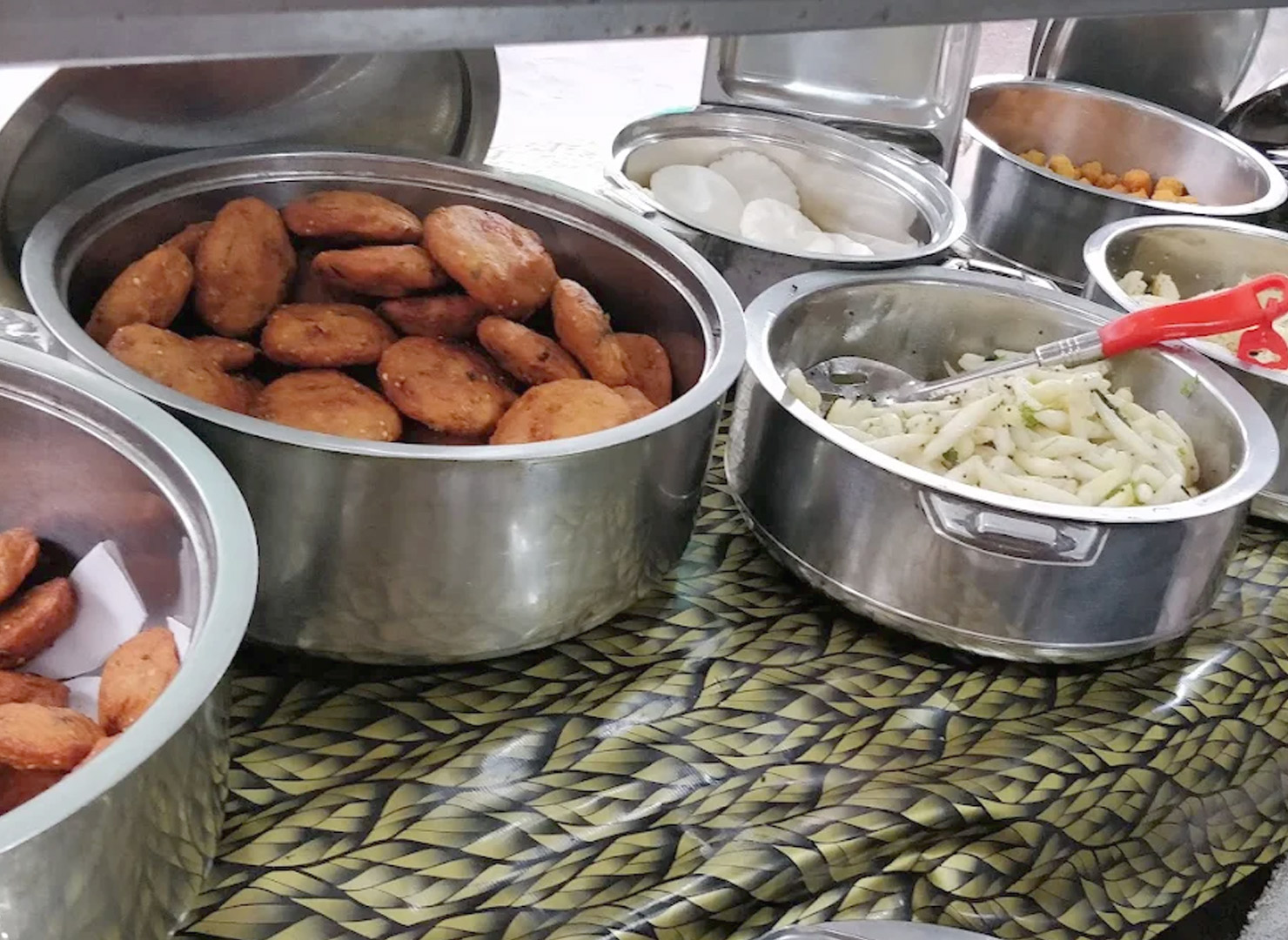
Gad Kalewa (Near Ghadi Chowk)
What it is: A heritage counter that showcases a variety of Chhattisgarhi snacks, from chousela, angakar, muthiya, to doodh fara and festive laddus. This is one of the best places to try a variety of regional flavours.
All-India & Local Menus in Sit-Down Restaurants
Some of the best restaurants in Raipur offer comforting North Indian staples, such as thalis and snacks. They also have a wide variety of North Indian dishes that go well with Chhattisgarhi.
From Breakfast to Dessert, Here's What Eating in Raipur Could Look Like
Breakfast: Poha-Jalebi + Chila
Poha (soft, lightly spiced, flattened, lemony rice with peanuts, sev, and other ingredients) is a great way to start. Serve it alongside hot, spicy jalebi. If you can find a local stall that fries chila, add it to your plate. Ask for the coriander-chili sauce and some curd. The
Chhattisgarh breakfast is incomplete without chila.
Mid-morning Snack: Fara/Muthia
Steamed fara and muthia are light, high in protein, and easy to digest. It tastes best when seasoned with mustard and curry leaves.
Lunch: Dubki Kadhi with Aamat & Rice
Order dubki with steamed risotto, and aamat, if you can find it. This pairing combines creamy, tangy comfort with fresh, forest-like brightness. For a complete Chhattisgarhi meal, add a leafy greens Bhaji.
Evening: Marine Drive (Telibandha) Walk + Street Bites
Telibandha Lake becomes alive as the sun sets. Slowly loop around the lake, then munch on gupchup and Indo-Chinese favorites like crispy chili potato or veg Manchurian. This is a great place for pictures. It's buzzing, casual, and fun.
Dehrori, Gulgula, or Petha: Sweets to enjoy at night
You can finish with something old-school and syrupy, like gulgula or petha. These are often found at mithai stands and on menus that have a festival feel.
Ingredients Spotlight - What gives Raipur food its signature?
- Rice and Rice Flour are the foundation. It can be pounded into flour for angakar, chousela, or fermented for batters like chila.
- Besan & Pulses: Urad dal for chila, besan to make kadhi & pakoras.
- Curd and Buttermilk: Body and sourness (kadhi, bore baasi, quick marinades).
- Leafy greens: Lal bhaji or cholai, chech bhaji stir-fried in dals, bring iron-rich, earthy notes.
- Bamboo Shoots & Forest Herbs - The "wild larder", which gives dishes like aamat a distinct tang and texture.
- Everyday Spices - Mustard, cumin, and coriander. Also, turmeric, garlic, chilies, asafoetida, and curry leaves.
Street Food Classics That You Shouldn’t Miss
- Gupchup: A local crisp with sprouts or spiced potatoes; the water is a tangy mint-tamarind, cumin-chili, or a combination of both.
- Dahi Kachori & Dahi Kada (Sadar Bazar), a classic crowd pleaser. Cooling yogurt with sweet-tangy chutneys and a sprinkle of chili.
- Poha-Jalebi - the classic sweet and savory breakfast duo
- Moong Vada/Cheela Corners: Protein with minimum fuss. Often under Rs50 to Rs80 per plate, depending on the stall.
- Egg & Veg Rolls: Filling, quick, and ideal for a stroll along the lake.
The Shortlist (by Experience Type)
Note: These hubs are frequently recommended by travellers, locals, and directories. Check the current availability and hours before you go.
-
Chhattisgarhi spread
Gad Kalewa: Heritage corner where you can try angakar, chouselas, muthias, doodh faras, festive laddus, and much more.
-
Sweets & Comfort of Old City
Manju Mamta (MG/M.G. Road): Long-standing favourite for homely meals and snacks. The menu is broad and offers a variety of options for groups.
For All-Rounder Meals (Veg & Multi-Cuisine)
Girnar Restaurant, central city: This restaurant is often included in lists of reliable vegetarian meals, including thalis, North Indian plates, and snack options.
-
For Evening Street Grazing
Telibandha (Marine Drive) Food Zone: Gupchup, rolls, momos, Indo-Chinese, shakes. Vibe > formality, go at sunset.
Sadar Bazar/Gol Bazar Lanes: Enjoy the classic market snacks like dahi vadas, samosas, kachoris, and jalebis while strolling.
VIP Road/Shankar Nagar/City Centre: Clusters of modern shops: chaats, rolls, sandwiches, dabeli, and pav bhaji, easy to mix and match with shopping.
One-Day Food Trails in Raipur
Morning (8:30-10:30 am)
Start in the old city/MG Road. Poha-jalebi, a hot chila, and a popular stall's poha-jalebi are all you need. Take a half-plate of moong vada straight from the oil if you can. It's crunchy on the outside and earthy on the inside.
Late Morning (11:30 am)
Gad Kalewa is located near Ghadi Chowk. They offer a variety of dishes, including angakar Roti, Chousela, and muthia/fara. You'll need to save room for lunch, so keep portions small.
Lunch (12:30-2:30 pm)
Find a restaurant that serves dubki Kadhi, and if possible, aamat. Serve with steamed bhaji and greens.
Evening (5.30-7:30 pm)
At sunset, head to Telibandha. Then, stroll the promenade and graze on gupchups, egg rolls or veggie rolls, momos and a manchurian. Finish with a thick, creamy milkshake.
Night (8:30 - 9:30 pm)
Try dehrori or petha for a taste of the syrup and grain roots of the area.
Landmarks and Addresses (to get you close)
Look for cultural venues around the Mahant Ghasidas Museum, Civil Lines, and Gaurav Path.
- Mahant Ghasidas Memorial Museum - A landmark to plan your itinerary around (Kutchery/Ghadi Chowk Side; founded 1875).
- Sadar Bazar, Nayapara/Churi Line - Snack streets of heritage; Saurashtra Mishthan Bhandar is a notable stop.
- Gole Bazar - Dense snack/sweet lane cluster.
- Pandri Market: Cloth Market + Evening Stalls, near City Center Mall.
- Telibandha Lake - Lakeside promenade, with street food stalls.
Raipur Food: The comforting feeling of its food
Raipur's food is a reflection of its climate and agricultural practices: rice and lentils are the main ingredients; cooking methods include steaming, fermentation, and light frying. Flavors are clean, tangy, and gentle, with a textural component rather than a chili-heavy one.
Even the street food relies on balance--sev crunch with soft poha, samosas with hot curd, and spicy pani balanced by meetha pani. You can eat it any day and feel great.
You can plan a day of food in the city around Civil Lines (Gad Kalewa and museum), then spread out in the evening to Sadar/Gole Bazar or Telibandha. This one arc will give you a true, honest impression of Raipur.
For more about Raipur -
Raipur isn't just about its diverse and rich food culture, but also its diverse traditions, agriculture, and rural living. If you'd like to know more about the local villages, District, and regional charm of Raipur, go through this comprehensive guide to villages in India, Raipur.

